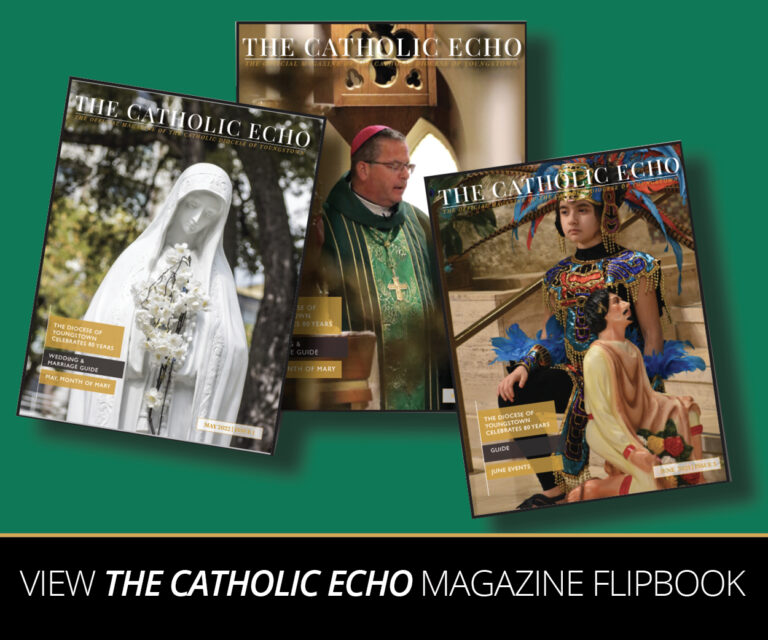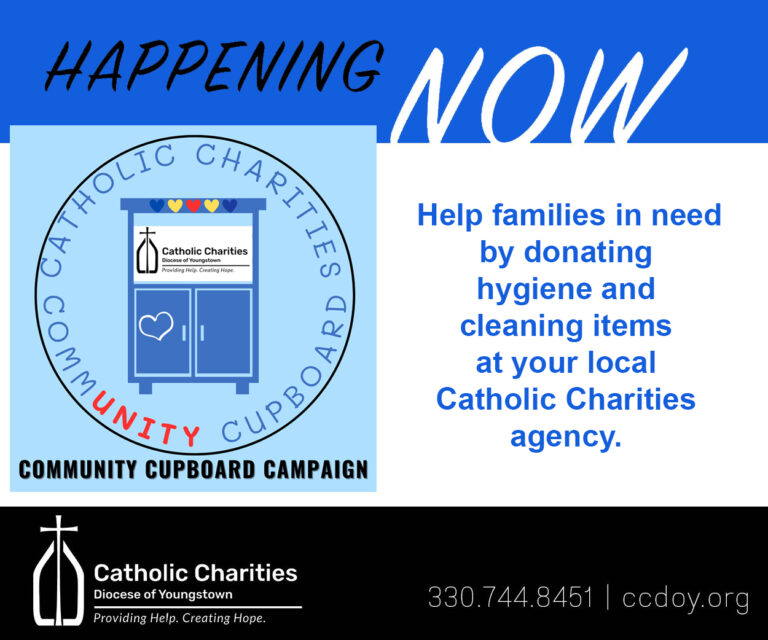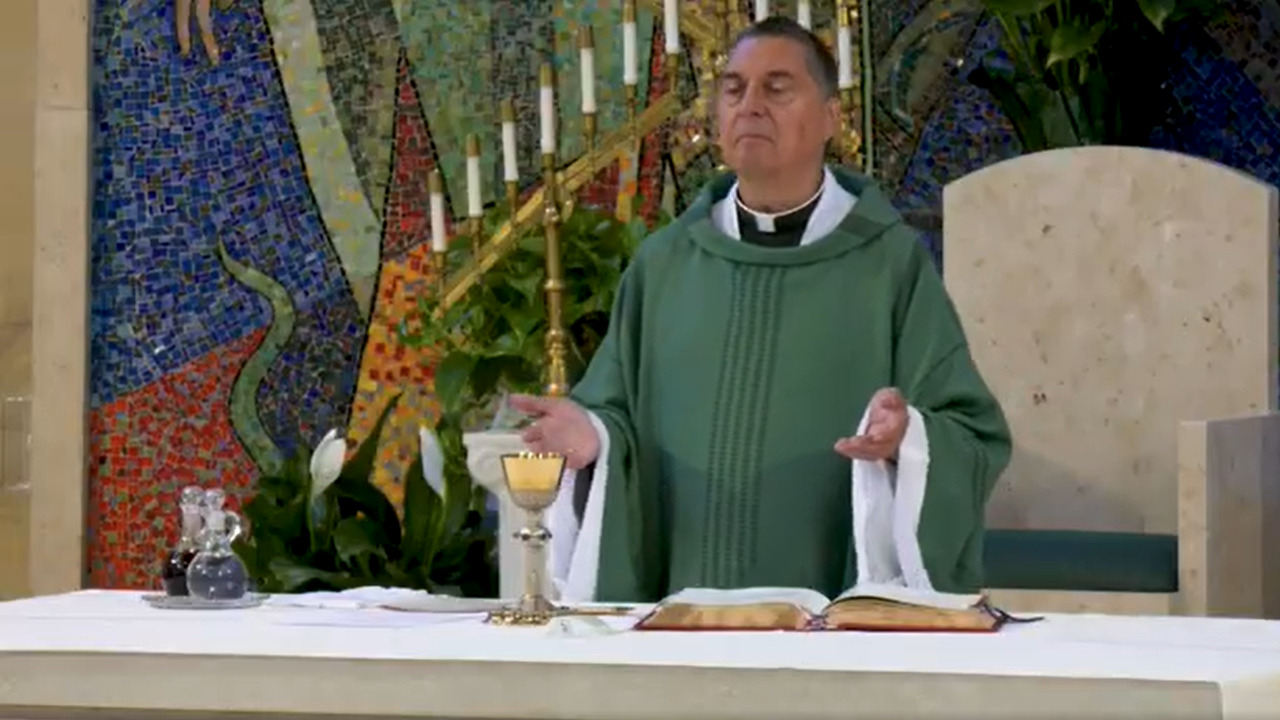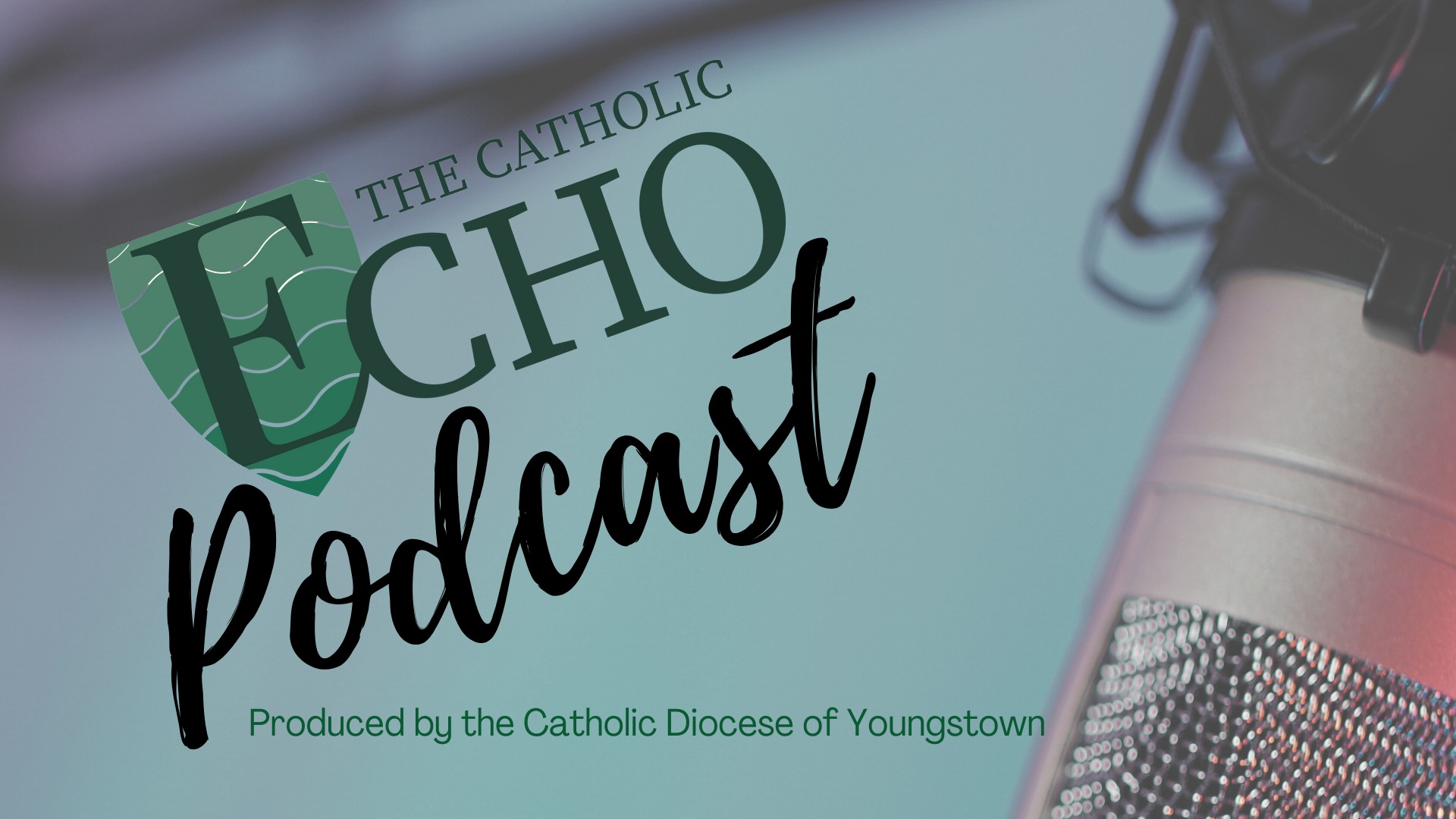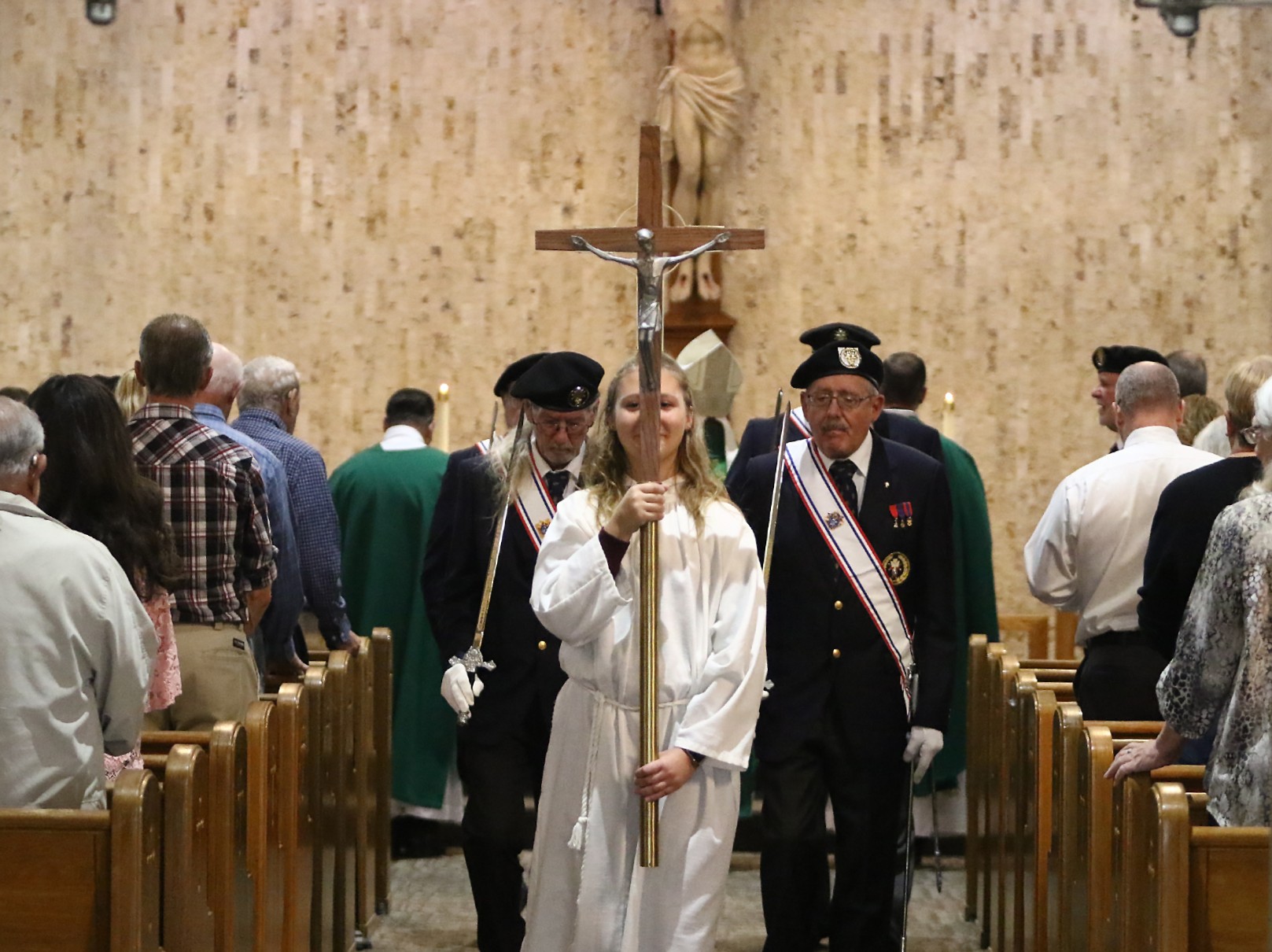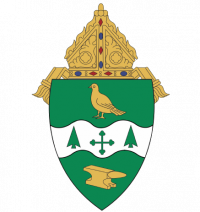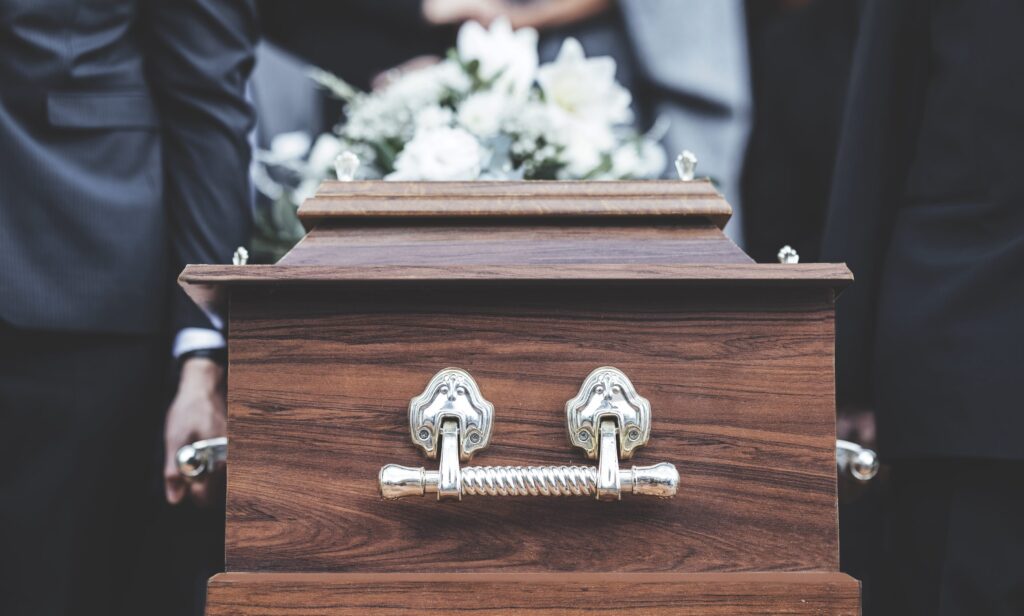
Benjamin Franklin once wrote: “In this world, nothing is certain except death and taxes.” Death is, of course, not the most pleasant topic in the world. But, as an undeniable fact of life, it sometimes bears discussion.
In the Catholic Church, a funeral is as much about honoring the life of the faithful departed as it is about consoling those left behind. The funeral rites of the Church—the vigil, funeral liturgy and the committal (burial)—exist to intercede on behalf of those who have passed away, but each stage of the process also serves an important role in helping the bereaved gain closure in their loss, and to find the hope in the Word of God and the Eucharist. These practices descend from our spiritual beliefs, but they are also rooted in a deep understanding of human psychology.
Father Michael Balash, director of the diocesan Office of Worship, points to the human desire to ritualize significant events—from birthdays to holidays, to declarations of love and commitment and, yes, even to death.
“We are a ritualistic people—our entire lives are involved in ritual,” Father Balash said. “What would the Thanksgiving holiday be like without Thanksgiving dinner? Every holiday that we celebrate involves some ritual action … Death is also an event that we need to celebrate, and we celebrate that through rituals.”
Ritualizing events—both the joyful and the sad—helps us to place those moments within the narrative of life, Father Balash said. God made us to understand events as part of a story, and placing death within that story helps us to contextualize it in our lives in a way that is not only productive, but also consistent with our Christian knowledge of the soul. We know that death is not the end, and our funeral practices help us to reconnect with that belief in an even deeper and more meaningful way.
“That’s the power of the funeral rituals from start to finish. The vigil, funeral liturgy and the committal really help to transform people from primarily focusing on their loss to turning their eyes to a sense of hope that they will see their loved one again at the end of time in the resurrection,” Father Balash said. “The funeral rites do not diminish the loss and the grief, but I think the power of the rites of Christian burial … promotes and allows a sense of hope and comfort to be present.”
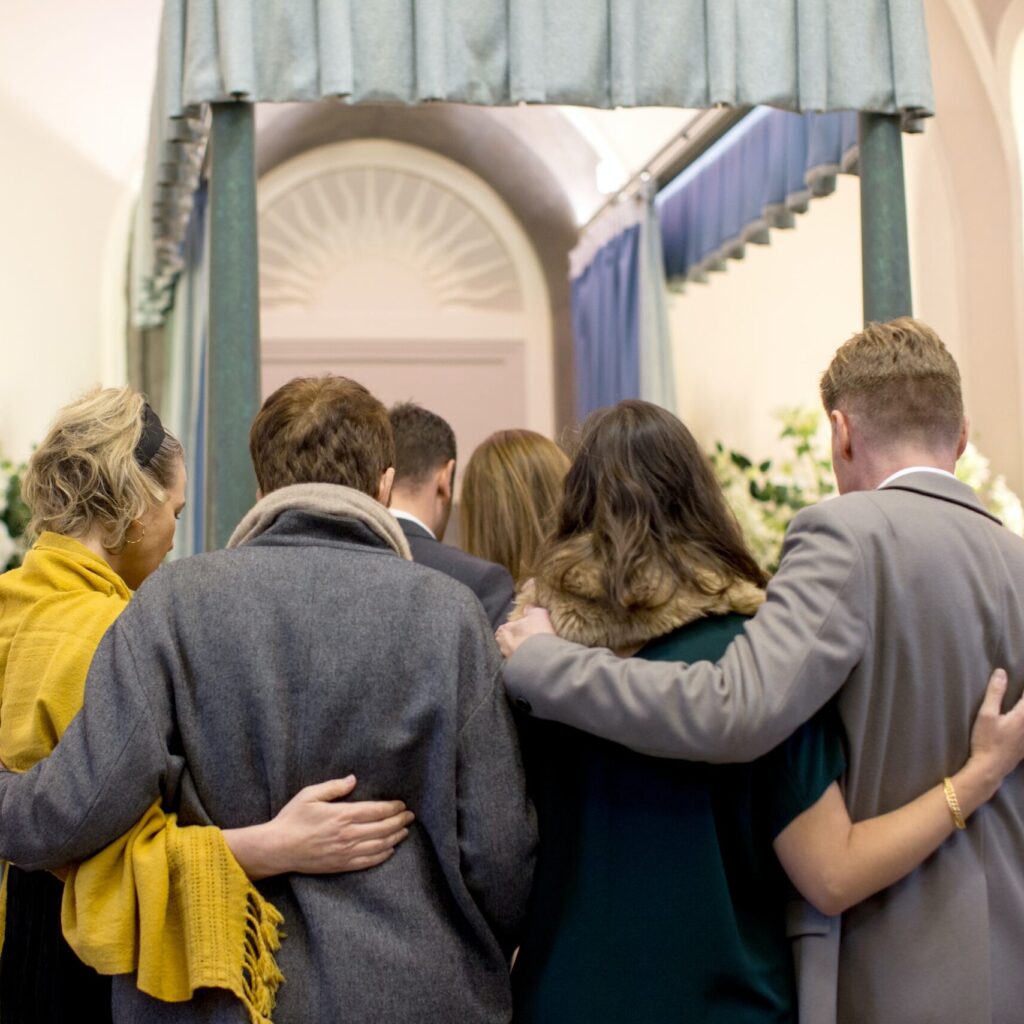
Vigil
Commonly known as a “wake service,” a vigil typically takes place the night before the funeral liturgy. A vigil will normally include a Service of the Word, with Scripture readings and prayers. Alternatively, the vigil service can take the form of a prayer from the Office for the Dead, from the Liturgy of the Hours.
“The first [rite] is the vigil,” Father Balash said. “This is the principal rite that is celebrated from the time following death to before the funeral liturgy; so it usually takes place at the calling hours or visitation. It is a Liturgy of the Word service that basically allows the community to keep watch with the family as they mourn the loss of a loved one.”
Father Balash also explained that the vigil service is a way to move the mourning process into a place of prayer. “There’s always been a practice of vigil, vigiling—viewing the body of a deceased person. In previous times, that took place often in the home, and then it got moved to a funeral home. But there has always been a gathering of the family around their deceased loved one,” he said. “I think the Vigil Prayer Service helps to bring this moment to prayer.”
The vigil serves the purpose of remembering the life of the deceased, and it is an opportunity to share the burden of grief with others. The focus at this stage of the funeral is very much on our human experience of grief. We acknowledge the reality of the loss, remember the love we have for the departed and embrace the pain of the bereaved with compassion.
By attending to the grief and mourning of the bereaved during the vigil service, we are then able to celebrate the person’s faith and remember our hope for the resurrection during the funeral liturgy and the rite of committal.
Funeral Liturgy
The funeral liturgy is probably what most people think of when experiencing a funeral—people gather for a Mass offered in remembrance of the departed. This stage of the funeral process is focused on faith—that of both the living and the dead. While grief will undoubtedly still be felt by all those in attendance, the liturgy offers the bereaved an opportunity to reaffirm their belief in Jesus’ victory over death.
Father Balash pointed out that, while it may sound strange to use the word “celebrate” in regard to a funeral, the funeral liturgy portion of the funeral rites are intended to celebrate the spiritual life of the deceased person within the community of the Catholic Church.
“The person has lived their life and has become strengthened by the moments of Church. Baptism, Confirmation, the reception of the Eucharist, Marriage—all of those are pivotal moments of people’s lives that take place in Church,” Father Balash said. “So it makes sense that the final moment of people’s lives on Earth and their entrance into their heavenly reward should be celebrated in Church as well. The funeral liturgy celebrates the person’s life of faith.”
And thus, a person’s life come’s full circle within the Church. This is indicated symbolically through the white cloth draped over a casket during the funeral liturgy: “The white garment worn at Baptism is a sign of our Christian dignity and the outward sign of the presence of Christ in our life. The funeral pall—which is the white garment of the casket—represents the person’s life in Christ and symbolizes our belief that we have been redeemed and saved by the death and resurrection of Christ.”
Additionally, because the funeral liturgy celebrates a person’s life in the Church, it also provides an opportunity for their parish community to say goodbye.
“When a person dies, there’s one less in the community,” said Father Balash. “We may not know everyone in the parish, but we have a relationship with them because we belong to this community … I think the funeral liturgy is an opportunity for the parish community to celebrate that person’s life.”
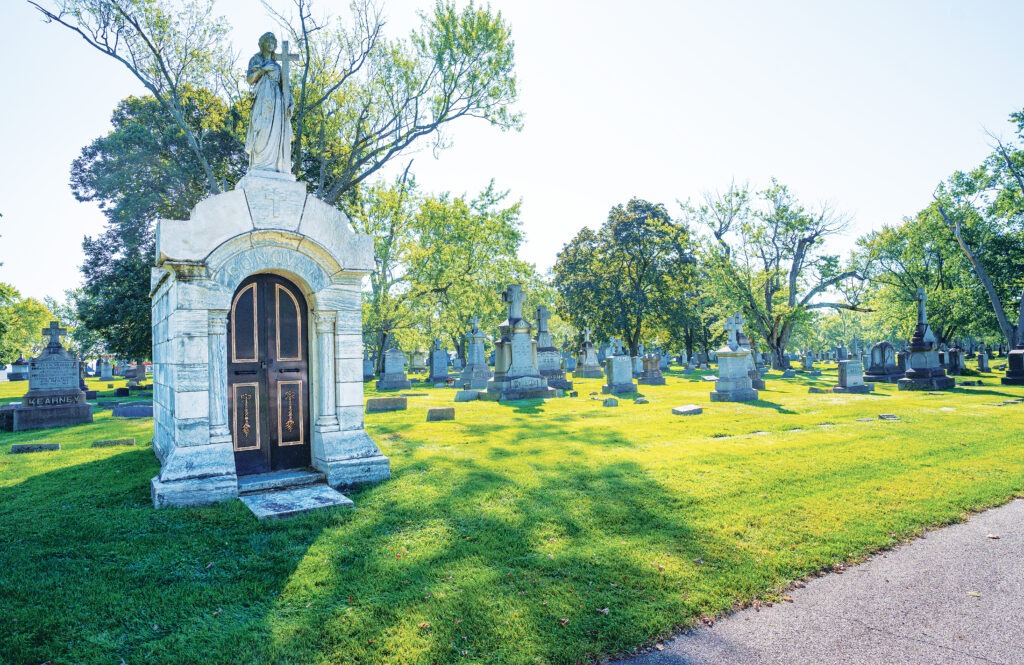
Rite of Committal
Finally, after the vigil service and the funeral liturgy, the earthly remains of the departed are laid to rest in the Rite of Committal.
A burial or interment is about much more than simply placing a person’s remains in a place that we can later visit; in laying the deceased “to rest,” we are demonstrating our hope for the resurrection to come. This is why the Church places such great emphasis on the treatment of a person’s remains—it is because we believe that the body will be raised up when Jesus comes again.
“The final station is the Rite of Committal, in which we bring our loved one to the place of burial. We commit their body to the Earth in the hope and the assurance that someday we will all rise again, and our body and soul will be joined in a glorified state for eternity,” Father Balash explained.
Cremation is an accepted practice within the Church, with the understanding that the cremains be treated with the same respect and dignity as a deceased body. The entire cremated remains are required to be properly interred or buried at the time of death in the same manner that a body is buried or interred. Visit www.catholicecho.org to read about this in more detail in a story from The Catholic Echo’s November 2023 issue, titled “Dignity in Death.” It is not permitted to keep a person’s ashes at home, or to divide them among family members or surviving relatives. It is also not permitted to scatter or spread cremated remains. These practices contradict the Church’s teaching on the sanctity of the body, that includes cremated remains.
According to Father Balash, the rite of committal helps us to find comfort in the mourning process. “Going to the cemetery for the prayers of committal is an essential part of the rites of Catholic burial, and it helps bring closure,” he said.
Moving Beyond Loss
Each distinct part of the funeral process plays an important role in supporting the bereaved in their grief and moving them through the pain of loss to a place of acceptance and hope. As Father Balash says, the whole Catholic funeral rite is cohesive and should be experienced as one event. “While the three stations are distinctive in character, they are also interrelated and transformative. The richness of the rites can help move us from a state of despair and loss to a place of hope and confidence in eternal life.”
Robert Seelig, founder and CEO of Catholic Funerals and Cemetery Services (CFCS)—a nationwide nonprofit organization that manages diocesan cemeteries and funeral homes, including Youngstown’s diocesan cemeteries—agreed there is a unique healing power to the Catholic funeral rites.
“When we lose somebody, we’re emotionally overwhelmed and we’re also concerned about all the people around us that are going through the loss,” Seelig said. “I think the Catholic Church has the most beautiful rituals around the Order of Christian Funerals that allows what we can’t put into words to occur.”
Unfortunately, as Father Balash points out, there has been a growing trend away from full Catholic funeral services.
“The growing thought is that if we don’t have calling hours, or have a funeral Mass, or if we don’t go to the cemetery … the pain of loss will go away,” Father Balash said. “Death is painful, and so we will try to avoid pain, but in reality the funeral rites of the Church help us face and deal with pain of loss in a positive and helpful way. Weeks after a funeral, I’ve often had people then say, ‘I’m sure glad we had a funeral for Mom or Dad, because it really helped us.’”
The transformative power of the Rite of Christian Burial that Father Balash described demonstrates just how important it is to maintain diocesan-operated cemeteries—something that CFCS facilitates for more than 30 dioceses across the country.
Seelig said that changes in technology alongside the influence of an increasingly secular culture necessitated an external organization responsible for spreading awareness of Catholic funeral rites and stabilizing diocesan cemeteries for the future.
“When I founded Catholic Funeral and Cemetery Services, my idea was to have the Church reclaim its place as the moral authority on the Order of Christian Funerals,” Seelig said. He added that while CFCS “manages” a diocese’s cemeteries, a big part of what the nonprofit does is educational.
“We place a director in the diocese and then we work with all the employees of the cemeteries to put together all of the programs we do for outreach and ministries in the diocese,” Seelig said.
Alongside the CFCS’ educational and financial activities, Seelig’s organization has worked to expand the mission of the Church with new charitable programs to serve emerging needs and to change the public perception of funeral services.
For example, our diocesan cemeteries offer the Mother Teresa Burial Program, which provides charitable burials for families who cannot afford them. CFCS has a similar program relating to the improper treatment of cremated remains. “When it comes to cremation, what we discovered was that three quarters of cremated remains weren’t making their way into cemeteries,” Seelig said. To ensure that cremated remains were being treated in a dignified manner, CFCS started the All Souls Remembrance Program, which offers a “dignified committal” at any of their affiliated cemeteries, free of charge. Learn more about CFCS’s mission programs at www.cfcsyoungstown.org.
Many parishes also offer free programs to people who are experiencing a loss, such as support groups and grief counseling. “There [are] parishes that offer some follow-up consolation ministry that brings people together on a regular or semi-regular basis … It allows people to realize that they’re not alone, that there are other people that are experiencing the same thing,” Father Balash said.
To anyone experiencing loss, Father Balash also said that praying for the deceased can be healing. While there is no one standard way to do this, he recommends praying in a way that feels most appropriate, whether that be in a church, while watching a sunset or by the side of our loved one’s resting place.
While nothing can take away the pain of losing a beloved friend or family member, our Catholic funeral rites serve to care for both the deceased and the bereaved in a way that honors the body, the mind and, above all, the soul.
“The whole celebration of the funeral rites brings an inner peace to people, and allows them to bring understanding to their loss,” Father Balash said. “Experiencing the funeral rites of the Church, provides the opportunity—without diminishing the loss—for the mourners to turn their hearts toward a sense of hope for eternal life.”


